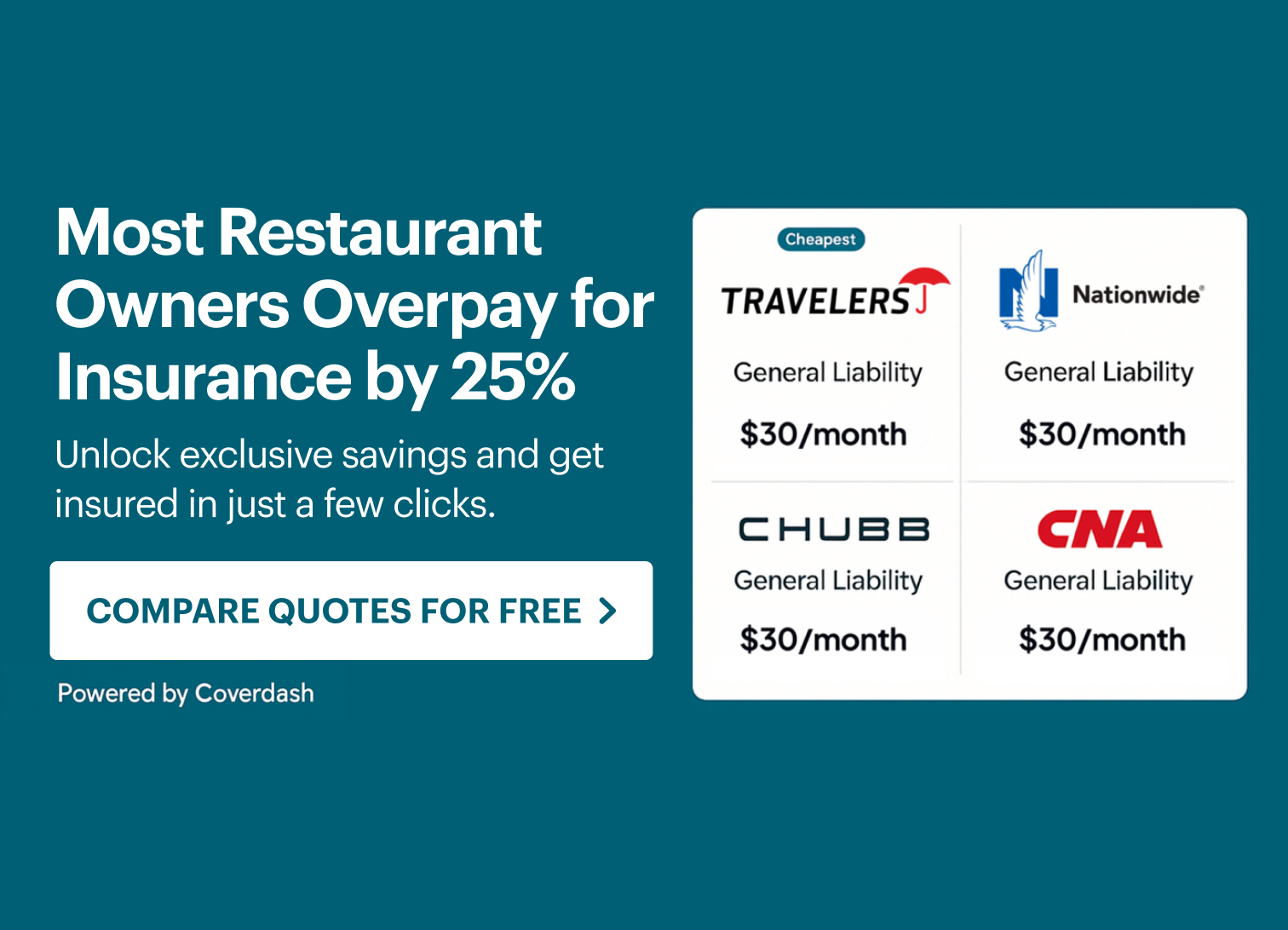Location! Location! Location! The old real-estate adage that location should be a key factor in deciding on a property is just as true for restaurants. Where your restaurant is located can be just as important to your success as your menu, marketing, or customer reviews.
As you embark on the quest to find the perfect location for your restaurant, for every space you visit, you should answer the following questions:
- Is this location suitable for my concept?
- What is the population base of this area?
- How many customers can I expect?
- Is there enough expendable income in this area to support my restaurant?
- What is the average age of the people who live in this area?
- What is the average household income of the people who live in this area?
- What is the ethnic breakdown of this neighborhood?
- Is this building up to code?

We’ve outlined the steps you’ll need to take to determine the locations that could best fit your restaurant. In this article, you’ll learn:
- How to perform a location analysis. (This includes: how to locate your target market, determine target market saturation, and analyze neighborhoods)
- How to evaluate a building and restaurant space
- The experts you need to help you find the best location
Restaurant Location Strategy
At this point, you should know which city you wish to open your doors in. The question is, exactly where within that city? In this exercise, you’re going to conduct a restaurant location strategy analysis and narrow down your search area to specific communities and neighborhoods.
Step 1: Identify the Minimum Target Market Population You’ll Need
Before you can identify neighborhoods fit for your restaurant, determine the minimum number of target market consumers you need to surround your restaurant. By calculating this minimum, you ensure there is enough of your target market around to sustain your restaurant. After all, you want to choose a location with enough diners to keep you afloat.
Pro tip: learn more about defining your target market.
Use the following calculation by FitSmallBusiness.com to determine the target market saturation that you’ll need.
Calculate the daily restaurant capacity
Daily restaurant capacity = desired seating capacity x number of seatings
Desired seating capacity: the approximate number of people needed to fill your restaurant at a single time
Seatings: number of times you can turn a table over in a day
- Example: 50 people in a seating X 3 seatings in a night = 150 daily restaurant capacity
Calculate the minimum target population you need
Base this calculation on the assumption that your target market comes in once a month
Minimum target market population = daily restaurant capacity x days of a month
- Example: 150 X 31 = 4,650 minimum target market population
Step 2: Locate Your Target Market
Ideally, you want to locate your restaurant in communities that have a high density of your target market, beyond the minimum requirement we calculated in step one. We recommend that you identify between five and eight neighbourhoods that are highly saturated with your target market.
You should perform this analysis before you begin looking at listings. Why? 1: So you don’t have to repeat the research process for every listing you encounter. 2. So you can direct your real estate agent to areas already filled with your target market. 3. So you conduct your listing search with your target market in mind.
Locate areas that your target market occupies using the following tools:
US:
U.S. Census Bureau: Quick Facts Tool Analyze states, counties, cities and zip codes by population, age, sex, race, housing, income, families, education, health, economy and how this demographic travels via car, public transport or by foot.
Zip-Codes.com: Drill into neighborhoods using zip codes to segment population according to demographic information. You can name a subdivision, like Brooklyn, NY, and a map will appear which allows you to zero in on neighborhoods even further. The site also provides you with the zip code for those granular areas. Zip-Codes.com lays out information in a friendlier way than census data. It categorizes information by census demographics like population, gender, race, median age, average income, single family households, number of businesses, etc.
ESRI: Using what they call “The Science of Where”, ESRI combines community lifestyle and demographic information in an interactive dashboard. Right now, this app is only available for U.S. data, however the company has plans to expand internationally.
Enter a zip code. Then choose two criteria out of: population density, median age, monthly credit card charges, online banking users, financial optimists, graduate and professional degrees, manufacturing workforce, and college football viewers.
View the custom dashboard ESRI creates based on your criteria. The dashboard includes:
- A demographic tapestry: For the Brooklyn zip code 11201, the demographic is broken up by the percent of population who represent:
- Laptops and Lattes: “We are affluent, well-educated singles and partner couples who love life in the big city and hold professional positions. Most rent apartments and either work from home or walk, bike, and take public transportation. We visit art galleries and museums; attend the theater, opera, and rock concerts.”
- Golden Years: “We are active, independent seniors who are either retired or nearing the end of our careers. Most of us are singles or empty nesters. We stay busy with travel, sports, eating out, visiting museums, attending concerts, and focusing on our physical fitness and good health.”
- High Rise Renters: “We mainly live in the Northeast, especially New York City. We live in very dense and diverse neighborhoods with a multitude of languages and foreign-born populations. We commute far for our jobs and we struggle to make ends meet. Rent is high, but we’re devoted to our families. Younger members of this segment love music, TV, and fashion.”
You can alter the dashboard to see how the other criteria listed above, like monthly credit card charges and median age, also play out in this neighbourhood.
You also have the option of analyzing:
- Drive time: analyze population data within 15 minutes of the zip code
- Ring buffer: analyze population data within five miles of the zip code
Canada:
Distill census information similar to the U.S. Census Bureau’s QuickFacts Tool. You can drill down to various levels of geography, including provinces and territories, census metropolitan areas, communities and postal codes. It provides information based on population, age, sex, dwellings, families, marital status, and language.
City of Toronto Neighborhood Profiles:
See census data visualized by neighborhood within the City of Toronto. By clicking on neighborhoods on the interactive map, you receive a nice-neat visualization of the demographic based on the last census. Each profile contains the following information: population snapshot, population density, demographic information, living arrangements, marital status, family size, language, and income.
Using the tools mentioned above, complete the following demographic analysis for each neighborhood. Add or subtract demographic criteria as it applies to your target market. e.g. ethnic breakdown, income levels, family size, marital status etc,
Prospective Neighborhood Name:
- Total Population Base:
- Average Income:
- Average Age:
- Average Household Income:
- Ethnic Breakdown:
- Average Family Size:
- Target Market Population Analysis:
How to do a Target Market Population Analysis
Refer back to the buyer personas you created in Defining Your Target Market. Your buyer personas are the profiles you created based on demographics, psychographics and behaviors. They make up your target market.
With a focus on demographic information, for every buyer persona, complete the following steps.
- Step 1: Find the total population of people that match your buyer persona.
For example: If one of your buyer personas is a female between the ages of 25-35 years old, add the total population of this target market to your analysis.Note: unfortunately, it is difficult to combine metrics beyond gender + (age, income, marital status, etc.) for example: “females between the ages of 25-35 with an income of $50,000” would be hard to determine without overlapping data because of the way census data is organized. instead, you can identify “females between the ages of 25-35” and “females with an income of $50,000” separately. - Step 2: Once you’ve finished this analysis for all your buyer personas individually, add them together.
- Step 3: Compare this figure against the Minimum Target Market Population you calculated earlier. If it exceeds the minimum target market population you need, then the area is a candidate for further analysis. If there isn’t enough of your target market in this area, then scratch it off your list.
Repeat this analysis until you have between five and eight neighbourhoods that meet or exceed your minimum target population needs.Note on population density: A general population of 50,000 people is required to safely support a new restaurant. This population should be within a maximum driving radius of 15 to 30 minutes.
Step 3: Analyze Each Neighborhood
Now that you’ve narrowed down the target market rich neighborhoods, your next step is to analyze each neighborhood for:
- Foot and Vehicle Accessibility
- Complimentary Businesses
- Direct and Indirect Competitors
Foot and Vehicle Accessibility: Above all else, your location must be accessible. The location you choose should acquire enough traffic to fill tables organically, without any help from digital marketing or promotional efforts.
Foot Traffic: This metric represents the number of people who will walk by your restaurant on the average day. It is important because it indicates how many people could walk into your restaurant spontaneously. The more foot traffic, the better. When you’re comparing locations, areas with more foot traffic should be more desirable.
While this metric might seem difficult to determine, Foursquare Analytics has come up with a solution. The app leverages and normalizes data from its existing database, which powers more than 100,000 apps, including Snapchat, Swarm and Foursquare. It takes foot traffic data based on users who have opted into continuous location sharing. Using Foursquare Analytics, you can segment foot traffic data by gender, age, new customers and returning customers.
Vehicle Traffic: Vehicle data indicates the exposure you’ll get from passing vehicle traffic and potential customers based on drive bys alone. Many cities offer public traffic data. When you’re comparing locations, areas with more vehicle traffic should be more desirable.
Accessibility: Suppliers, staff and guests will need a place to park. Evaluate all your parking options when comparing locations. A dedicated parking lot isn’t a necessity if street parking or paid parking is available.
Complementary Businesses: For each location, make a list of complimentary businesses in the area. By “complementary businesses”, we’re referring to the neighboring businesses that could share their market with you, but aren’t competition. The activities of complementary businesses actually drive diners to you. Simply being in close proximity to them can increase your foot traffic. Complementary businesses include but aren’t limited to: stadiums, theatres, business districts, transportation hubs, and malls.
How complementary businesses benefit you:
- Office buildings: Hungry professionals could come to your restaurant for lunch.
- Train stations: Cafes around transport hubs can attract caffeine deprived commuters.
- Theatres and stadiums: Restaurants can capture attendees pre-and-post performance or a big game.
Pro Tip: When you’re composing your list of complimentary businesses, also analyze the health of those businesses. If neighboring businesses seem to be scraping by, this might be an indication that the neighborhood’s economy isn’t healthy.
Complete your list of complimentary businesses using the following tools:
Google Maps: Enter the postal code, neighborhood or address. Select the “Nearby” feature. Select the filter of your choice. Alternatively, either perform a manual search for various businesses or enter street view and digitally walk around the neighborhood.
Around Me App: Search local businesses of all classifications on your smartphone by using a predetermined filter.
Or forget the tech and go for a drive. The best way to evaluate local businesses is to pay the neighborhood a visit.
Direct and Indirect Competitive Analysis:
When choosing a location, the primary goals of your competitive analysis are:
- To ensure that your market is not over-saturated. Some competition is healthy, but if there are multiple restaurants with the same cuisine and concept as your restaurant, you will want to look for another neighborhood.
- To ensure that in general, businesses are thriving. This indicates that there’s an appetite for consumption.
- To identify market gaps. If there’s a way you can refine your restaurant concept based on a market gap, your odds of success heighten.
In order to do this, complete a full competitive analysis of your area.
You’re Ready to Start Reviewing Real Estate Listings!
After determining the areas with a high density of your target market and performing a location analysis on each of one those neighborhoods, you’re in a prime position to begin looking at listings. For each listing you view, you’ll have to conduct a building evaluation.
Conducting a Building Evaluation
Following along with our Building Evaluation Checklist, ask yourself the following questions:
Are there zoning restrictions?
You might be looking at a space that was previously home to a restaurant. You could also be looking at a space that needs to be converted. Some locations are very obviously commercial zones where restaurants are welcomed and permitted. Others locations might not be so self-evident. Either way, you’ll have to review zoning ordinances, which can include restrictions based on:
- Using homes for business
- Increased traffic
- Street parking
- Prominent signs
- Employees working from a converted home
Note: alcohol is restricted in many u.s. counties. if you’re planning on selling alcohol, make sure you’re in a county where it’s permitted.
Is the building up to code?
You’ll have to pass a building inspection before your doors open. A building inspector (described in the next section) can ensure that the building is up-to-code through an inspection of the kitchen, fire suppression tools, general infrastructure and electric work.
Is the space big enough?
Kitchens, freezers, washrooms, bar wood and booths take up a lot of room. Ask yourself honestly:
- Does the kitchen lay out fit the space you need for a fridge, freezer and prep area?
- Will the bar area fit booths and high top tables?
- What will the logical seating flow be?
- Will customers be sitting on top of each other?
- What is the maximum capacity of this space?
Restaurants can fill up with equipment quickly. You’ll have to make sure that once you’ve got your kitchen, bar, pantry and washrooms installed, there will still be room for your guests.
What’s the history of the building?
The history of the building could make or break the site in your selection process. As a best practice, ask yourself the following questions:
- Did another restaurant occupy the space before you? If so, why are they leaving: lack of customers? Too much competition? Not enough funds?
- What obstacles did they have with the space?
- Were there problems with the building: Was there a flood last year? Electrical issues? Ventilation problems?
- Were there issues in the neighborhood: Theft in the area? Do the residents up top complain when there’s live music?
Make sure you ask the representing real estate agent for this information. If they aren’t forth coming, reach out to the previous tenants.
To help you determine the best location and space, call in your team of restaurant experts.
When it comes to finding a location for your restaurant, you have to be informed, but you also shouldn’t go at it alone. Consult the following restaurant experts when you’re choosing your location. They will have access to information and insights that aren’t available to the public.
Commercial Realtor: Work with a commercial real estate agent who understands the restaurant industry. Don’t work with a residential agent. Commercial agents will have access to private information, like unlisted properties and complex information about lease agreements, government regulations, and building and construction clauses. They’ll also save you time researching demographics, neighborhoods, competing and complementary businesses and create a profile based on your wants and needs. Realtors manage all the lease negotiations for you. Bonus: they’re free.
Restaurant Consultant: Hire a restaurant consultant to look at your space and determine if it can fit your restaurant in reality. Consultants can service all location needs including:
- Site selection
- Design and construction project management and oversight
- Building design
- Interior and exterior design
- Architect selection and oversight
- General contractor oversight
- Liaison for permits & licenses
Building Inspector: You will need to hire a building inspector to determine if the state of the building is acceptable. When inspecting a site, their job is to:
- Perform inspections using survey devices, metering and testing equipment
- Inspect plumbing, electrical and fire systems
- Verify alignment, level, and elevation of structures
- Until the building is compliant, they have the power to issue violation notices and stop-work orders
- Provide written feedback related to the findings
Lawyer: You will need a lawyer to review the lease agreement and to make sure you’re asking your landlord all necessary questions. Lawyers are typically hired to consult and form documents for:
- Lease agreements
- Determine provisions
- Secure zoning permits and approval
- Acquisitions
- Construction
Conclusion
To recap, your location should be in an area rich with your target market. It should also be in an area where the population is large enough to support it. Once you’ve determined five to eight neighborhoods that fit this criteria, you’ll need to evaluate exactly where in that neighborhood your restaurant will get the most traffic, without losing diners to competition.
Your next steps are to conduct a thorough competitive analysis and evaluate the merit of each building before making a commitment.
Sign up for our free weekly TouchBistro Newsletter





